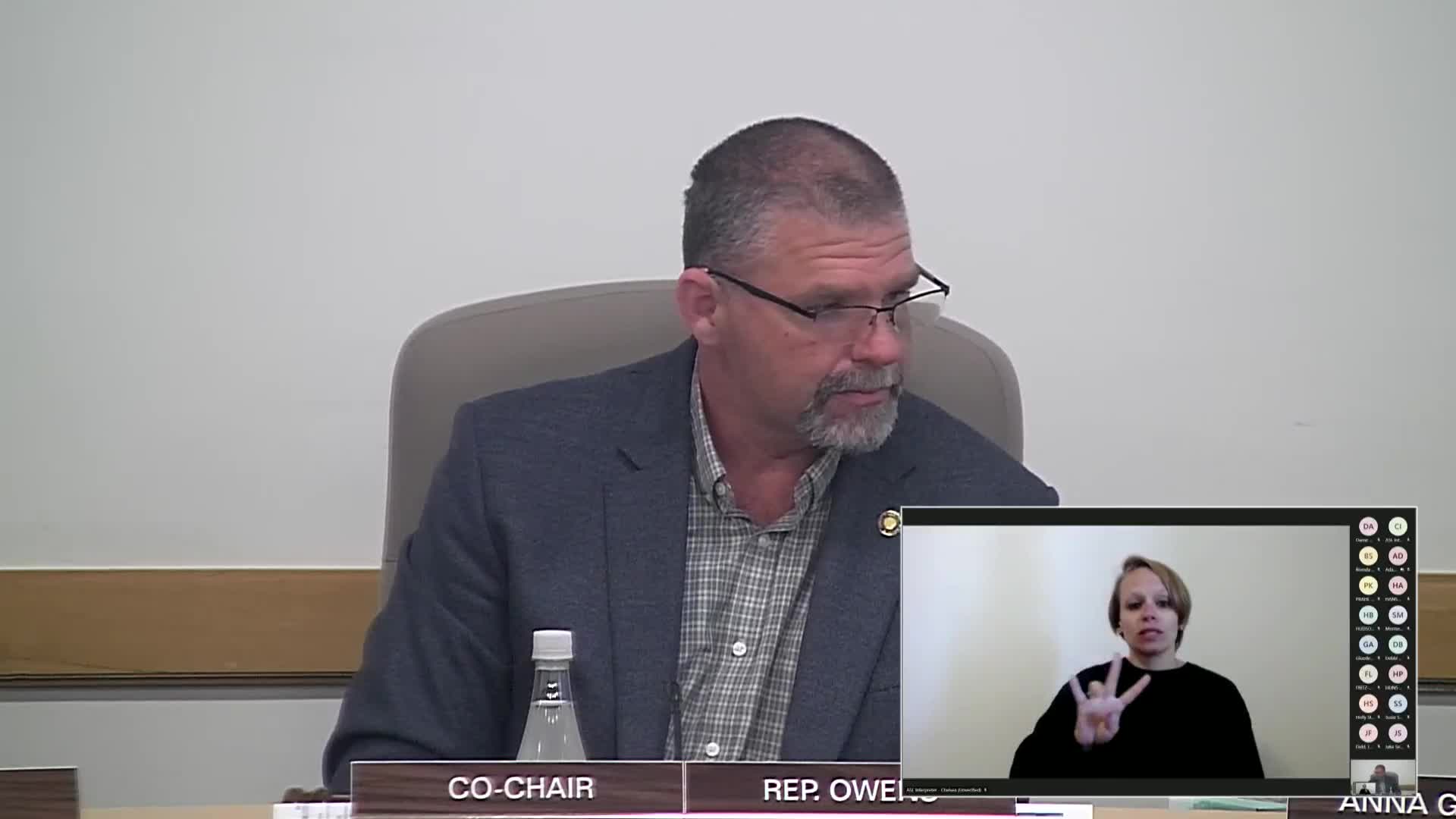Oregon committee approves $800K for PFAS study and $2M for water planning initiatives
March 19, 2025 | Agriculture, Land Use, Natural Resources, and Water, House of Representatives, Committees, Legislative, Oregon
This article was created by AI summarizing key points discussed. AI makes mistakes, so for full details and context, please refer to the video of the full meeting. Please report any errors so we can fix them. Report an error »

The House Committee on Agriculture, Land Use, Natural Resources, and Water convened on March 19, 2025, to discuss several key legislative measures aimed at addressing environmental and water resource challenges in Oregon.
The meeting began with a focus on House Bill 2947, which appropriates $800,000 from the general fund to Oregon State University (OSU) for a study on the occurrence and distribution of PFAS (per- and polyfluoroalkyl substances) in biosolids applied to agricultural fields not intended for human consumption. The bill, which had previously passed unanimously during the short session, aims to enhance understanding of PFAS impacts on the environment. The committee adopted a dash 1 amendment to the bill, which specifies the appropriation amount and confirms there is no revenue impact.
Following this, the committee moved to House Bill 3146, which proposes a $2 million appropriation to the Oregon Water Resources Department for the Place-Based Water Planning Fund. This funding is intended to support various water districts and councils in implementing state-recognized integrated water resources plans. A dash 2 amendment was introduced, which modifies the bill to direct the Water Resources Department to submit reports related to water planning and management, while also increasing the funding to $4.35 million for grants to support these initiatives. The amendment declares an emergency and is set to take effect on July 1, 2025.
Harmony Burright, Chief of Staff of the Water Caucus, provided context for the importance of place-based integrated water resources planning, emphasizing the need for communities to address diverse water conditions across the state. She highlighted the successful implementation of plans in four regions of Oregon, which have been recognized by the state and are now ready for further action.
The committee heard testimony from various stakeholders, including Union County Commissioner Jake Seiverk, who expressed support for House Bill 3146. He noted the collaborative efforts of local groups to develop and implement water resource plans that align with the state's integrated strategy.
The meeting concluded with a commitment to advancing both bills to the Joint Committee on Ways and Means for further consideration, reflecting the committee's ongoing efforts to address critical environmental and water resource issues in Oregon.
The meeting began with a focus on House Bill 2947, which appropriates $800,000 from the general fund to Oregon State University (OSU) for a study on the occurrence and distribution of PFAS (per- and polyfluoroalkyl substances) in biosolids applied to agricultural fields not intended for human consumption. The bill, which had previously passed unanimously during the short session, aims to enhance understanding of PFAS impacts on the environment. The committee adopted a dash 1 amendment to the bill, which specifies the appropriation amount and confirms there is no revenue impact.
Following this, the committee moved to House Bill 3146, which proposes a $2 million appropriation to the Oregon Water Resources Department for the Place-Based Water Planning Fund. This funding is intended to support various water districts and councils in implementing state-recognized integrated water resources plans. A dash 2 amendment was introduced, which modifies the bill to direct the Water Resources Department to submit reports related to water planning and management, while also increasing the funding to $4.35 million for grants to support these initiatives. The amendment declares an emergency and is set to take effect on July 1, 2025.
Harmony Burright, Chief of Staff of the Water Caucus, provided context for the importance of place-based integrated water resources planning, emphasizing the need for communities to address diverse water conditions across the state. She highlighted the successful implementation of plans in four regions of Oregon, which have been recognized by the state and are now ready for further action.
The committee heard testimony from various stakeholders, including Union County Commissioner Jake Seiverk, who expressed support for House Bill 3146. He noted the collaborative efforts of local groups to develop and implement water resource plans that align with the state's integrated strategy.
The meeting concluded with a commitment to advancing both bills to the Joint Committee on Ways and Means for further consideration, reflecting the committee's ongoing efforts to address critical environmental and water resource issues in Oregon.
View full meeting
This article is based on a recent meeting—watch the full video and explore the complete transcript for deeper insights into the discussion.
View full meeting
